—-Quebec 1608—-
My name is Jacques baguette, in 1608 I traveled with Champlain to establish a settlement on the St. Lawrence river. We would be closer to the native people and their furs. Our expedition down the river to Quebec (what we called the habitation). Our fort was built like a miniature European fortress. We formed a very important alliance with the Huron, to get the very best furs at the best price. In exchange with making an alliance with the Huron we had to battle the Iroquois, we took our arquebuses and won the battle. we killed the chiefs so quickly the native people were amazed. We were more worried about making profits that we were gaining size and ignoring population. In 1627 the company of 100 associates were given a monopoly of the fur trade, and we had to bring 4000 catholic settlers to new France over the next 15 years. We allowed the settlers to trade furs directly with the native people if they only sold them to our company.

Samuel de Champlain http://www.biography.com/people/samuel-de-champlain-9243971
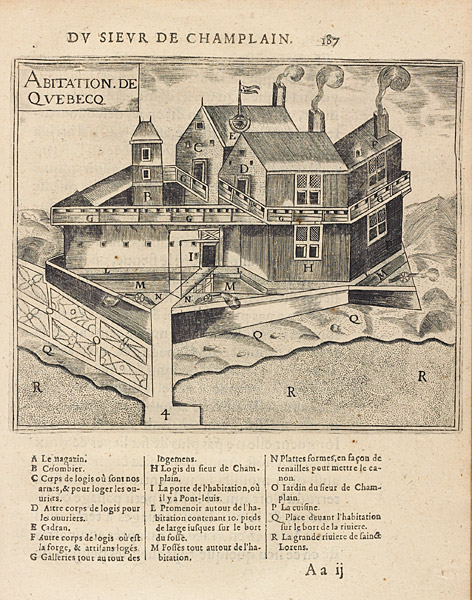
Quebec Habitation http://www.historymuseum.ca/virtual-museum-of-new-france/colonies-and-empires/founding-sites/

Champlain’s Fight with Iroquois Indians http://www.sonofthesouth.net/revolutionary-war/indians/iroquois-confederacy.htm

Samuel De Champlain Route To Quebec #1 http://comfortablejeans.com/images/picowl/samuel-de-champlain-route-to-quebec
—-Jesuits—-
In 1625 my Jesuit friend came over from France, to teach the native people about our god and try to convert them. I got to go with one of the Jesuits to Huronia, this is the area were all of the Huron live. I walked through the Ste. Marie mission and was amazed that they had built a chapel, hospital, bakery, carpentry shop, and a blacksmiths shop. I helped build a mission school for the Huron in Huronia while was there. I saw a few converted Huron walking around the mission. After we started traded blankets and clothing with the Huron they started getting diseases we haven’t had in ages. the disease problem was made worse when the Iroquois started making threats of war. In the late 1640s the Iroquois attacked our fur brigades, but since the had traded with the dutch the had fire arms, and actually did some damage. We never gave the Huron guns because the new laws forbid it. Since the Huron were weakened by disease, that we gave to them, they ended up have a horrible disadvantage compared to the Iroquois. The Huron eventually succumbed to their fate and were killed by the Iroquois.

Father Jacques Marquette with Indians http://en.wikipedia.org/wiki/Jesuit_Missions_in_North_America
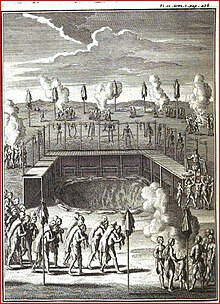
Engraving of the Huron Feast of the Dead http://en.wikipedia.org/wiki/Jesuit_Missions_amongst_the_Huron

Huronia 1636 https://theplainsofaamjiwnaang.wordpress.com/tag/huronia/
—-Royal Government—-
My friend from France came over to be the governor general, and acted as the king in new France. he is the highest ranking officer in new France, and he got appointed from the nobility, and was picked from the military officers. He was responsible for military planning, relations with the native people, and ensures officials do there jobs. His biggest concern is the expansion of the fur trade. A bishop I knew in France came over to new France, his name was bishop Françios De Laval. He represents the roman catholic church here, he rules over the priests and nuns of new France. he is in charge of the schools, missionaries, hospitals, and churches. He is a member of the nobility, and he reports to the king on colonial activities and ensures harmony. He is very involved with converting the native people. A man named Jean Talon, I’ve never met him before, but he is the master of new France. He informs the king about colonial stuff. He was a part of the nobility before he became the Intendant. he supervises the daily life, law and order, and the finances. He is currently trying to turn the colony from a fur trade foundation to and agriculture and industrial foundation.
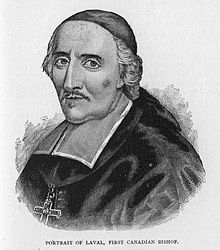
François de Laval http://en.wikipedia.org/wiki/Fran%C3%A7ois_de_Laval

Jean Talon http://en.wikipedia.org/wiki/Jean_Talon
—-Couruer de bois—-
France wants to have a close trading relationship with the native people. At first they wanted to have the native people come to the St. Lawrence, but our explorers and coureur de bois have to travel far out into the continent, we were looking for furs and the way to china. My son a couruer de bois, is an independent fur trader for the business, they bend the rules since the fur trade is supposed to be controlled by monopolies. The Iroquois have pretty much have cut off the Algonkians from reaching us at the St. Lawrence, so the coureur de bois had to go to the native people to get the furs. They travel the waterways in birch bark canoes, made by the Algonkians. Two of the well known coureur de bois, Radisson and De Groseilliers heard from the Algonkians about a great northern sea, and what they found was the Hudson bay and the rich territory around it. They tried to get France involve with that area but they ended up going to England and offered it to them. Jacques Marquette, a coureur de bois traveled the great lakes and the upper part of Mississippi river. One of the most famous fur traders, Rene Robert, Sieur de La Salle, came through our village, he is a noble in France. He built the first sailing ship on the great lakes, but it sank.

“Coureur de bois” – A woodcut by Arthur Heming http://en.wikipedia.org/wiki/Coureur_des_bois
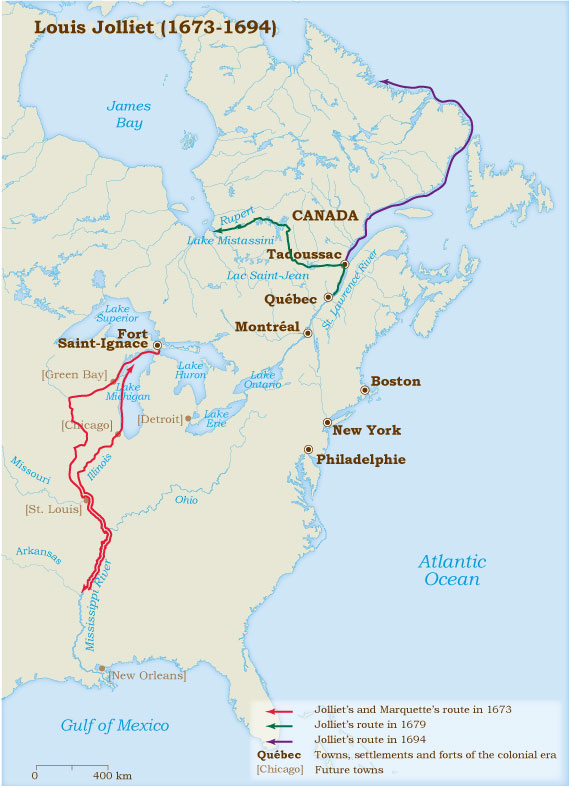
Route Louis Jolliet took through new france http://www.historymuseum.ca/virtual-museum-of-new-france/the-explorers/louis-jolliet-1673-1694/
—-Seigneury—-
Along the St. Lawrence river there are seigneuries which are parcels of land divided into thin strips. The person that owns the seigneury is the seigneur and he controls the land, and there are habitants which are the people that live in the seigneur and are peasant farmers, both seigneur and habitant are pretty prosperous. As a habitant I have duties I need to do, I have to pay taxes and dues to the seigneur, build a house and farm the land, perform unpaid labor to the seigneur a few days of the year, give a bit of produce to the seigneur. I serve in the militia, have to keep my land prosperous, and grind my grain at the seigneurs mill. The seigneur also has duties, He has to subdivide the seignuery and grant land to habitants, build a house or flour mill on the seigneury, help construct a church, and report to the intendant about the population of the seigneury, the amount of land under cultivation, and dues paid. There are also women who are seigneurs, they became seigneurs by inheriting the land after their husband died, they either keep it for them selves or hold it until their son is old enough for that responsibility. They have the same duties as the men seigneurs.

Problems of a Seigneury http://www.members.shaw.ca/babcock/los.htm

A manor house on a seigneury http://laprisemerciertrepanierorigines.blogspot.ca/2014/03/romain-destrepagny-marie-genevieve.html
—-Church—-
The Church has a major role in our colony’s life, nearly all of the people here are Roman Catholic, since our king made a law that only allowed Roman Catholics to come to new france. When we became a royal colony the role of the church changed a lot, the Church was mainly concerned with missionary among the naive people. After the campaign against the Iroquois the settlers started increasing, and more priests were needed for the people on the seigneuries and in the towns, Bishop Laval met this need by bringing in more priests from France. Laval also started a seminary which trained boys for their priesthood. Hospitals, education, and charities are Church business, and the Church holds a influential position in the government. The Bishop is one of the most important people on the sovereign council, Church opinion is considered when important decisions about the colony were made. When we started grow more independant the church started losing power, when they try to tax us, I refuse to pay over one twenty-sixth of my crops, which limits the income of the Churches.

a small simple chapel http://www.dahlheimer-bebeau.com/Bebeau/CanadaBatiscan.htm

church http://www.learnquebec.ca/en/content/curriculum/social_sciences/features/situation_seigneury/parishchurch.html
—-French VS. English—-
We have had conflict with the English for ever, or at least until I can remember, but since they opened the Hudson’s Bay Company everything has gotten worse. Although we both depended on the Native peoples to supply the furs, the British fur trade was different from our’s in two major ways. The first difference is that we go under the direction of our Native guides, and explore farther and farther inland searching for new fur territory, the British waited for the Native people to bring furs to their forts around Hudson Bay. The second difference is that the Hudson’s Bay Company was formed by a group of merchants who put their money together to share the risks and the profits, and We are only interested in profits from the fur trade and not colonization. There is a new colony that was just started Cape Breton Island, because we lost our fishing base to the English, but since fishing is such a profitable business, we decided we needed a much larger fishing base to remain profitable, we called the base Louisbourg and we started construction of it in 1720. Louisbourg was not only used as a fishing base, but a military and naval base so they could control the gulf of the St. Lawrence river. The fortress is thought to of been impossible to break into, but had its flaws because it was poorly constructed and was surrounded by hills from which an enemy could attack. Even with it’s flaws, colonists in New England demanded protection from the us and the Native peoples, so the British constructed the fortress of Halifax in 1749. The fortress, built on a harbor, was designed to provide protection from Native and our raids for the British colonists in New England. Halifax became a powerful British base. Halifax was built differently from Louisbourg. It was a town site surrounded by five stockades rather than a fortified stone city like Louisbourg, Halifax was located at the end of a narrow sea passage that could be easily defended from enemies. After England captured Acadia they wanted the Acadians take an oath of allegiance, but they refused. After the treaty of utreach was signed the acadians were deported to the 13 colonies and louisiana, their houses were burnt down and land confiscated. Some people were sent back to France and some escaped to Cape Breton Island, Many died in the deportation, and many families were separated and never saw each other again.

Map of major fur trade routes http://www.canadiana.ca/hbc/person/verendrye_e.html

Louisbourg http://www.canadahistory.com/sections/voyager/2013/January/Maps.html

Replica of Port Royal habitation, located at the Port-Royal National Historic Site of Canada, Nova Scotia. http://en.wikipedia.org/wiki/History_of_Canada

Main street Louisbourg. http://en.wikipedia.org/wiki/Fortress_of_Louisbourg

Fortress of Louisbourg http://www.ego4u.com/en/read-on/countries/canada/cape-breton-island
—-Seven Years War/French and Indian War—-
The British attacked us in three areas, Louisbourg in 1758, the Ohio Valley in 1758, on Quebec in 1759. They use a three pronged attack to capture New France. In order to get to Quebec they had to capture louisbourg, which controlled the entrance to the St. Lawrence river. In June, we were surprised when we saw 200 British ships in the harbor. We fought for almost 60 days, the British took high ground over looking louisbourg and bombarded the fortress. By the time we surrendered, louisbourg had almost been destroyed. We had many fur forts in the Ohio Valley, the British needed to control the them to reduce our influence in the large area. We have been successful at defending the Ohio Valley. In august fort Frontenac was taken by the British, it was followed by fort Duquesne. We were driven back towards Quebec, but since louisbourg was captured British could freely sail to Quebec. By now Quebec is the only place that the British hasn’t taken from us. In spring after the ice melted on the St. Lawrence in 1759, a general in the British army named James Wolfe, over the summer the British fleet sailed into the St. Lawrence and bombarded the city from the water, the troops tried to land on the land on the beauport. Wolfe decided to to attack up river and cut off Quebec’s supplies. The plains of Abraham are just by Quebec and that’s where our general named Montcalm took his men and went to meet the British. Our troops were at a disadvantage because we were used to fighting in the forest, not open fields. We made a disorganized charge on the British, who waited until they were near and then fired on us, causing the ranks to break and retreat in disorder. In less than an hour the battle was over. Both Wolfe and Montcalm died from wounds received in the fighting. Quebec had been taken by the British. After the British took Quebec, our army and officials retreated to Montreal. The French made an attempt to drive the British from Quebec in the spring of 1760. They marched from Montreal to Quebec and were able to force the British to retreat behind the town’s walls. The outcome of the struggle for Quebec now depended on whether the first ship through the St. Lawrence that spring brought British or our reinforcements. The first ship to come was British and we retreated to Montreal again. In September 1760 the British troops marched to Montreal. Our governor, Vaudreuil, agreed to peace and surrendered to the British troops because the future attempts of resistance would fail. Chevalier de Levis, the commander of our army ordered that all of our flag had to be burned. The British had finally gained control of north america. However the war had not finished in Europe, until 1763, but between 1760 and 1763, the British army in New France set up a temporary government, this is known as the period of British Military Rule. This was an uncertain time for us, until a peace treaty was signed, New France was worrying about how our daily life and government might become different under British rule. Soldiers were allowed to return to their property, but they came home to see the damage done by the British soldiers. Jesuits were forced to return to France, but Since they had run the schools, our educational system was seriously weakened. Nuns were allowed to stay, the hospitals that they ran continued to operate. The British wanted to co-operate with us during this time of uncertainty, so daily life in New France changed a little bit during the British Military Rule, but New France lost its main political, business, and religious leaders who returned to France. In 1763, the war in Europe between Britain and France ended and The Treaty of Paris was signed. By the terms of the new treaty, France surrendered all of its possessions in New France and Acadia to Britain, all France kept was two tiny islands, called St. Pierre and Miquelon.
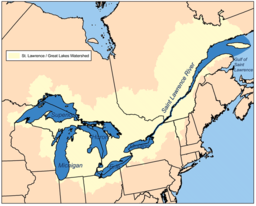
Map of the St. Lawrence/Great Lakes Watershed http://en.wikipedia.org/wiki/Saint_Lawrence_River

British burninng warship Prudent and capturing Bienfaisant. Siege of Louisbourg 1758 Siege of Louisbourg (1758)

Fort and bay of Frontenac http://ptolemeeplus.ca/antiquemaps/?p=36
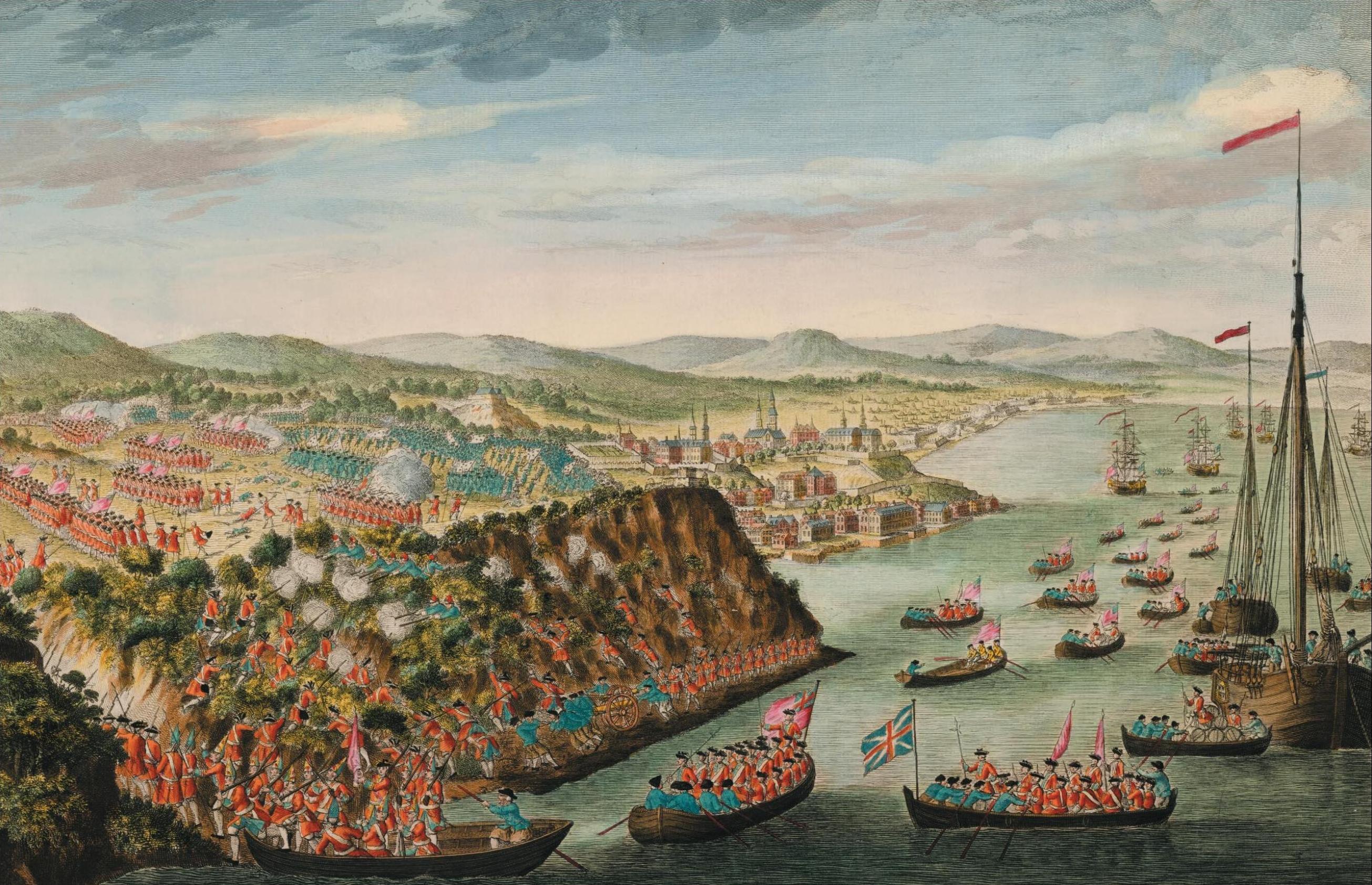
Drawing by a soldier of Wolfe’s army depicting the easy climbing of Wolfe’s soldiers http://en.wikipedia.org/wiki/Battle_of_the_Plains_of_Abraham

Surrender of the French Army in Montreal in 1760 http://en.wikipedia.org/wiki/User:Lord_Cornwallis/Fall_of_Montreal

Map of the Quebec City area showing disposition of French and British forces. The Plains of Abraham are located to the left. http://en.wikipedia.org/wiki/Battle_of_the_Plains_of_Abraham
Leave a Reply